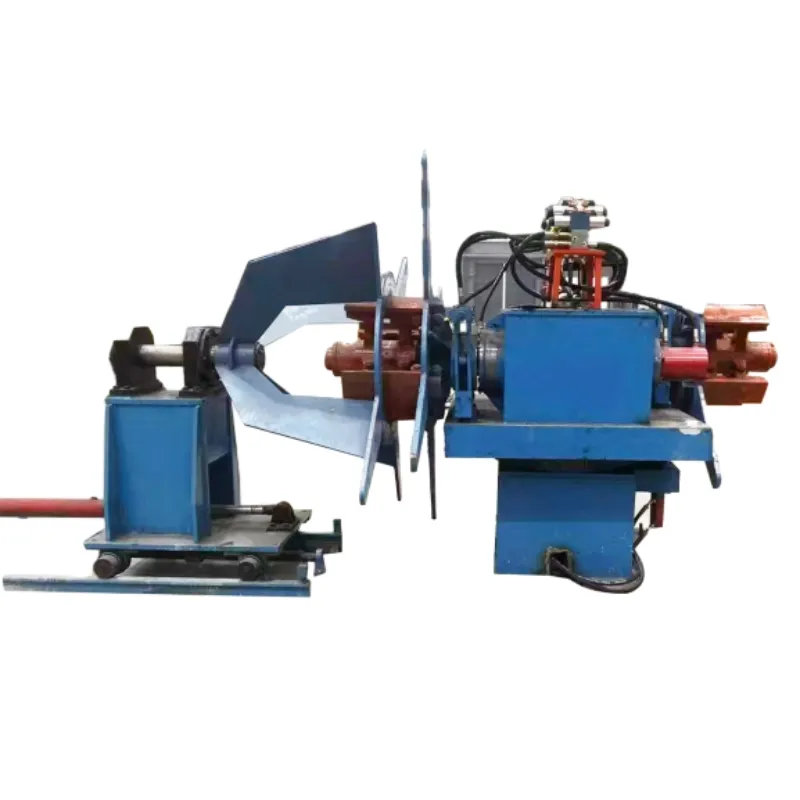hydraulic straightening press machines
Understanding Hydraulic Straightening Press Machines
Hydraulic straightening press machines are essential tools in various manufacturing and metalworking industries, designed specifically to correct deformations in metal parts and components. These machines employ hydraulic power, which allows for precise control over the force applied to the material, thereby reducing the risk of further damage during the straightening process. In this article, we will explore the working principles, advantages, applications, and future trends of hydraulic straightening press machines.
Working Principles
At the core of a hydraulic straightening press is the hydraulic system, which utilizes Pascal's law to amplify force. The machine consists of a hydraulic cylinder filled with fluid, which when pressurized, generates a significant force that is transferred to the object being straightened. The operator typically places the deformed metal part between the machine’s plates, and the hydraulic system activates, applying force until the part returns to its intended shape.
The machines can be equipped with various tools and fixtures that help in positioning the part accurately and ensuring the correct application of pressure. Some hydraulic straightening presses also integrate digital control systems, enabling operators to monitor and adjust parameters like force, speed, and travel distance, ensuring high precision and repeatability in the straightening process.
Advantages of Hydraulic Straightening Press Machines
1. Precision One of the main advantages of hydraulic straightening presses is their ability to apply controlled and consistent force, resulting in accurate straightening without altering the properties of the metal.
2. Versatility These machines can be used on a wide variety of metals, including steel, aluminum, and other alloys, making them ideal for different applications across industries such as automotive, aerospace, and heavy machinery.
3. Efficiency Hydraulic straightening presses can handle large-volume production with minimal downtime. Their capability to work quickly and effectively ensures that manufacturing processes remain streamlined, saving both time and costs.
4. Safety Compared to mechanical pressing methods, hydraulic systems offer a safer alternative, as they can operate at lower speeds and forces. This results in less risk of sudden accidents and operator injuries.
hydraulic straightening press machines

5. Reduced Material Waste With the precision and control provided by hydraulic presses, the chances of damaging or scrapping the workpiece are significantly reduced, leading to decreased material waste and associated costs.
Applications
Hydraulic straightening press machines are widely used across various sectors. In the automotive industry, they are crucial for straightening chassis components and frame parts, ensuring vehicles are structurally sound and safe. In aerospace, these machines assist in repairing and restoring aircraft components, which require high levels of precision and quality.
Additionally, the construction industry utilizes hydraulic straightening presses for reshaping metal frameworks and reinforcement bars. In heavy machinery manufacturing, they are employed to restore parts that may have become bent or deformed due to wear and tear during extensive use.
Future Trends
As technology continues to evolve, the future of hydraulic straightening press machines is likely to be influenced by advancements in automation and smart manufacturing. The integration of artificial intelligence and machine learning could enable these machines to analyze the deformations in real-time and adjust the settings automatically for optimal performance.
Moreover, sustainability will become a focal point, pushing manufacturers to develop more energy-efficient hydraulic systems and reduce the environmental impact of metalworking processes. Enhanced materials and designs may also emerge, resulting in presses that are lighter, yet more powerful and efficient.
Furthermore, the advent of Industry 4.0 signifies a shift towards smarter factories. Hydraulic straightening presses equipped with IoT technology could communicate with other machines, enabling a more cohesive and responsive manufacturing environment that minimizes downtime and maximizes productivity.
Conclusion
Hydraulic straightening press machines play a vital role in the metalworking and manufacturing sectors, facilitating the precise correction of deformations in various metal components. As industries continue to innovate and evolve, these machines are poised to undergo significant transformations, leveraging new technologies to enhance their functionality and efficiency. Understanding the capabilities and applications of hydraulic straightening presses is essential for businesses aiming to optimize their production processes and maintain high quality in their products.
-
High Frequency Straight Seam Welded Pipe Production Line-BzZhou Xinghua Machinery Equipment Manufacturing Co., LTD.|Precision Welding, High EfficiencyNewsJul.30,2025
-
High Frequency Straight Seam Welded Pipe Production Line|BzZhou Xinghua|Precision Welding&EfficiencyNewsJul.30,2025
-
High Frequency Straight Seam Welded Pipe Production Line - BzZhou Xinghua|Precision Engineering&EfficiencyNewsJul.30,2025
-
High-Frequency Straight Seam Welded Pipe Production Line-BzZhou Xinghua Machinery Equipment Manufacturing Co., LTD.NewsJul.30,2025
-
High-Frequency Straight Seam Welded Pipe Production Line-BzZhou Xinghua Machinery Equipment Manufacturing Co., LTD.|Precision Manufacturing, High EfficiencyNewsJul.30,2025
-
High Frequency Straight Seam Welded Pipe Production Line-BzZhou Xinghua Machinery Equipment Manufacturing Co., LTD.|Precision Steel Pipe Manufacturing&Industrial EfficiencyNewsJul.29,2025


